Introduction
Welcome to Gods Unchained !
Hi My name is Danny Kong also known as JeagerKay.
Whether you're a casual gamer or hardcore crypto veteran gamer it's always good to knows some of the basic when starting a new game.
So here is a collection of little tips and tricks to the game mechanics and system that I hope will be helpful to starting your journey to the top ranks.
Where to Start
The best place to start is of course the Tutorial to learn most of the game's basic.
Where you really start: Solo Matches
The game's Tutorial is neat and quick, but to get a better feel for a full match, head over to SOLO matches.
You'll need to click the panel that's peeking out of the side to get to it, this is also where you find the Rank matches, but more on that later.
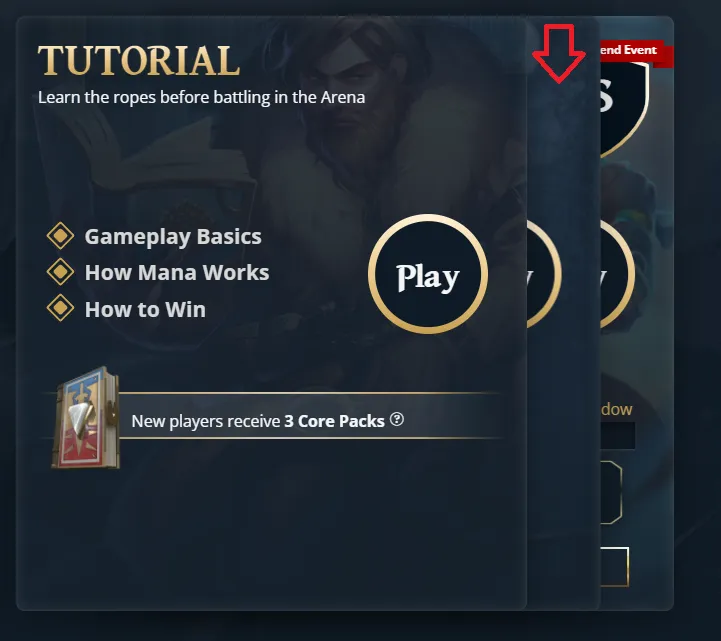
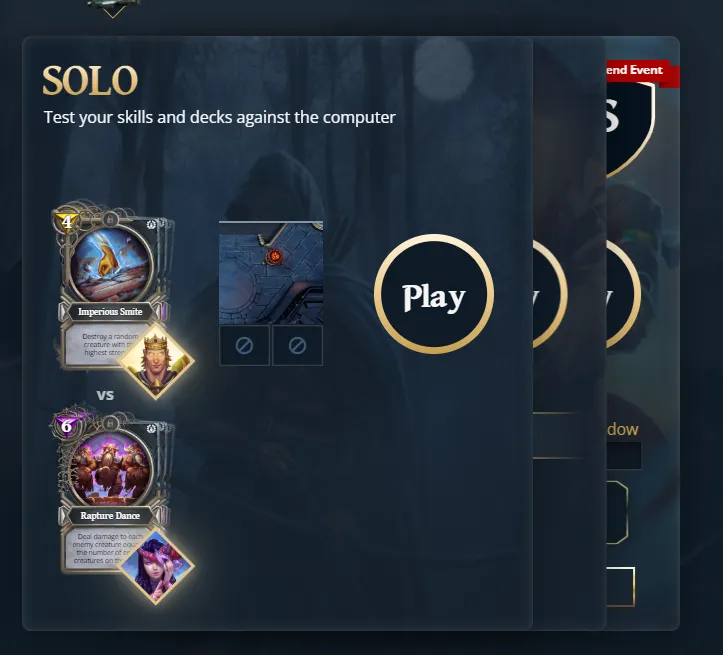
Start by picking starter deck for you and your AI opponent.
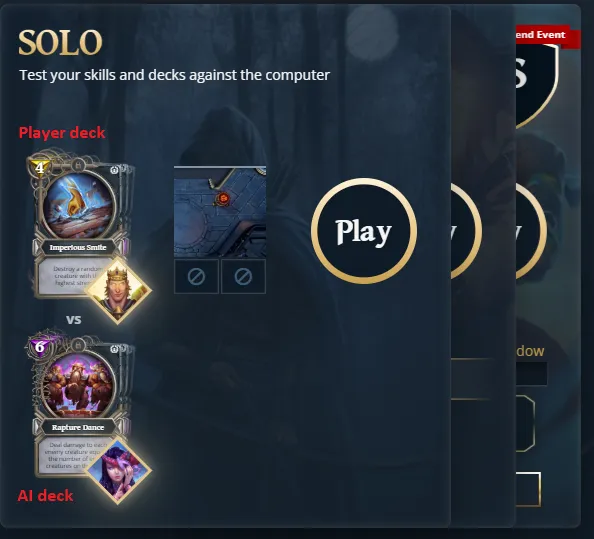
Most of the starter decks are pretty well built for newcomers.
There's really no need to overthink things and just pick any deck to seem interesting or fun to you, as you play your first few matches, you'll get a feel for the type of playstyle of each god.
Play and experiment till you find a playstyle that suits you.

Match Start: God Power and Starting Cards
At the Start of the match you'll have to pick a specialized god power to play with these are unique to the god you have chosen.

After picking your god you'll get 3 random cards and "card replace charges". First player gets 3 charges and second player gets 4 charges.
The 3 cards are the cards you will start the match with. It is possible to replace these cards as long as you have charges left.
This gives you a chance to possibly replace any high mana cost cards with lower mana costs cards, which is important for the start of a match.
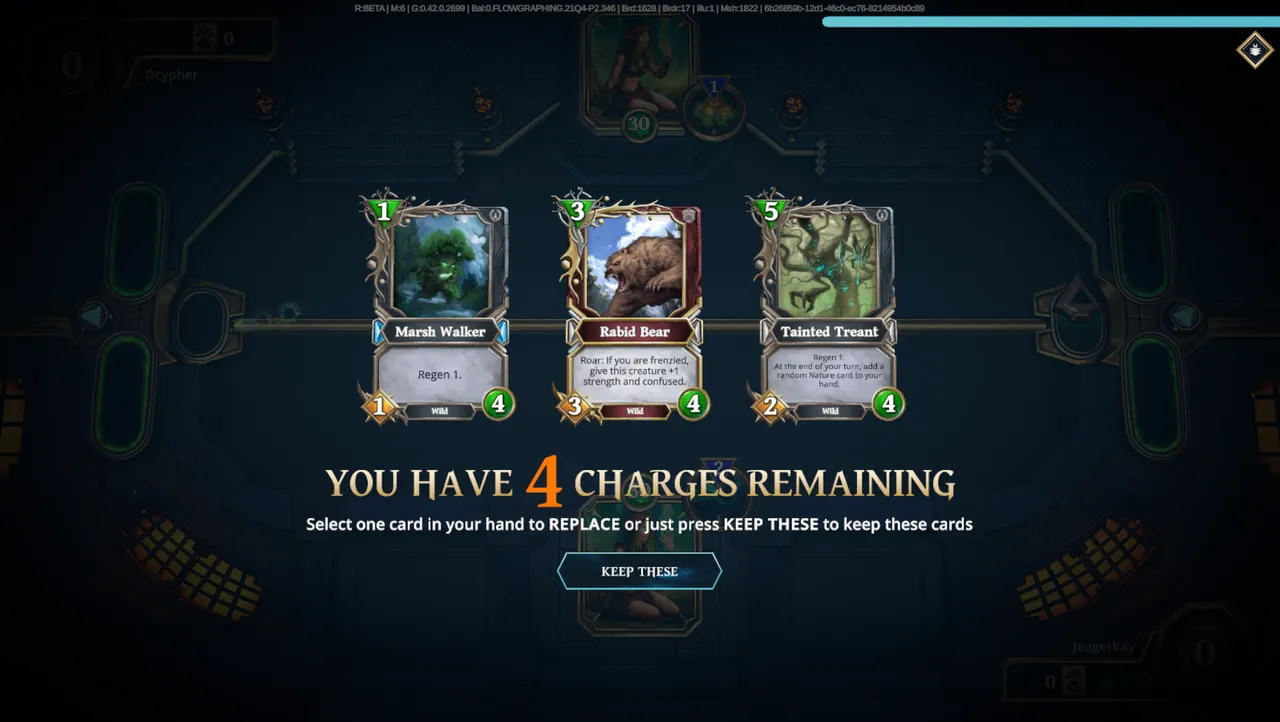
Board Layout
The playing board, most of this has been explained in the tutorial. We'll be going over some of the stuff the tutorial didn't cover.
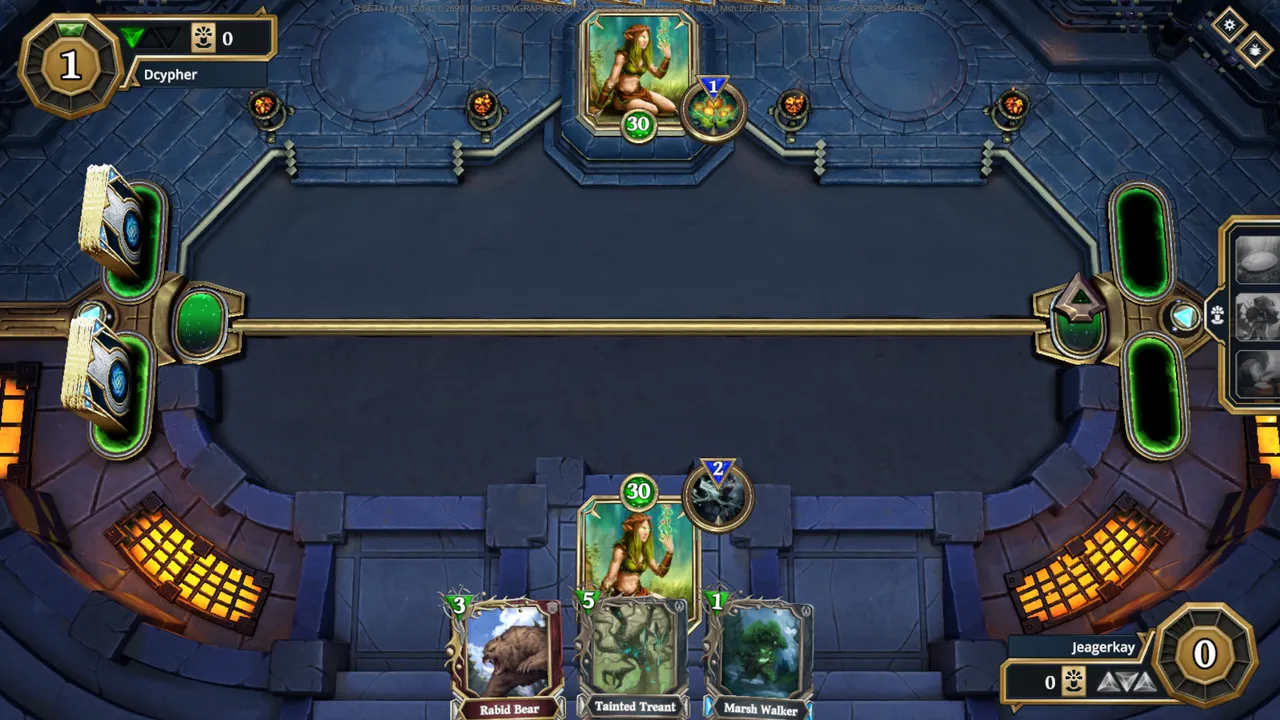
Mana Wheel
The mana wheel displays how much mana gems you have available during your turn. At the start of your turn you'll unlock on mana slot, what the game doesn't tell you is after 5 Mana it will take 2 turns to unlock the next mana block 6 and so on for the 7,8,9.
You can see this by the split displayed in the mana block


Turn Timer
Of course in a turn based game there will be a turn timer which is indicated by the gold bar in the middle of the board, when your color reaches the end turn trigger your turn will automatically end.

Small Bag of Tricks
The Small Bag of Tricks is the game's way of balancing out the mana wheel for both players. The starting player will receive 1 bag while the player who goes second gets 3 bags. Using one of these during your turn fills a mana block for you or a partial block (e.g. if you are at turn 6 with 5.5 mana you can use a Bag of tricks to just get you at 6 mana.)
Do note, using a bag of tricks on turn 5 will unfortunately not get you 6 mana, since it takes 2 turns to unlock the 6 mana block.
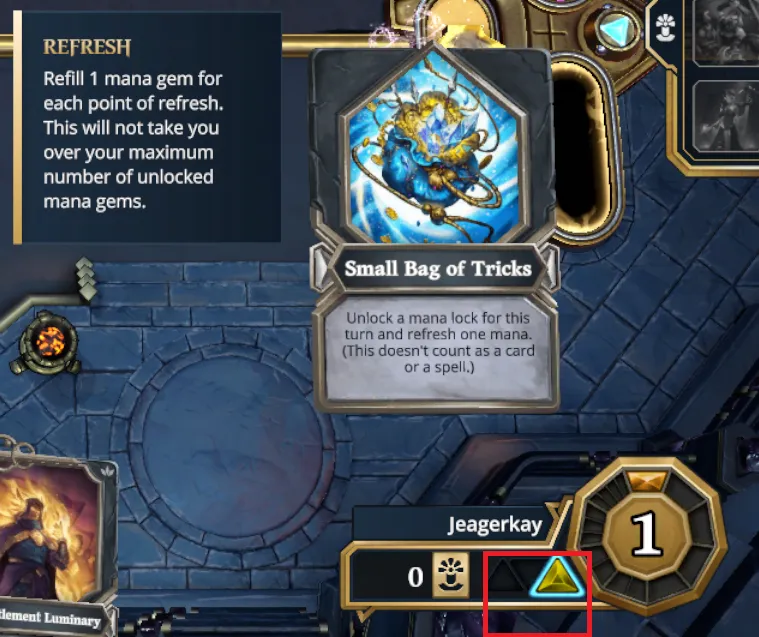
The Sanctum
This is located on the right side of the board.
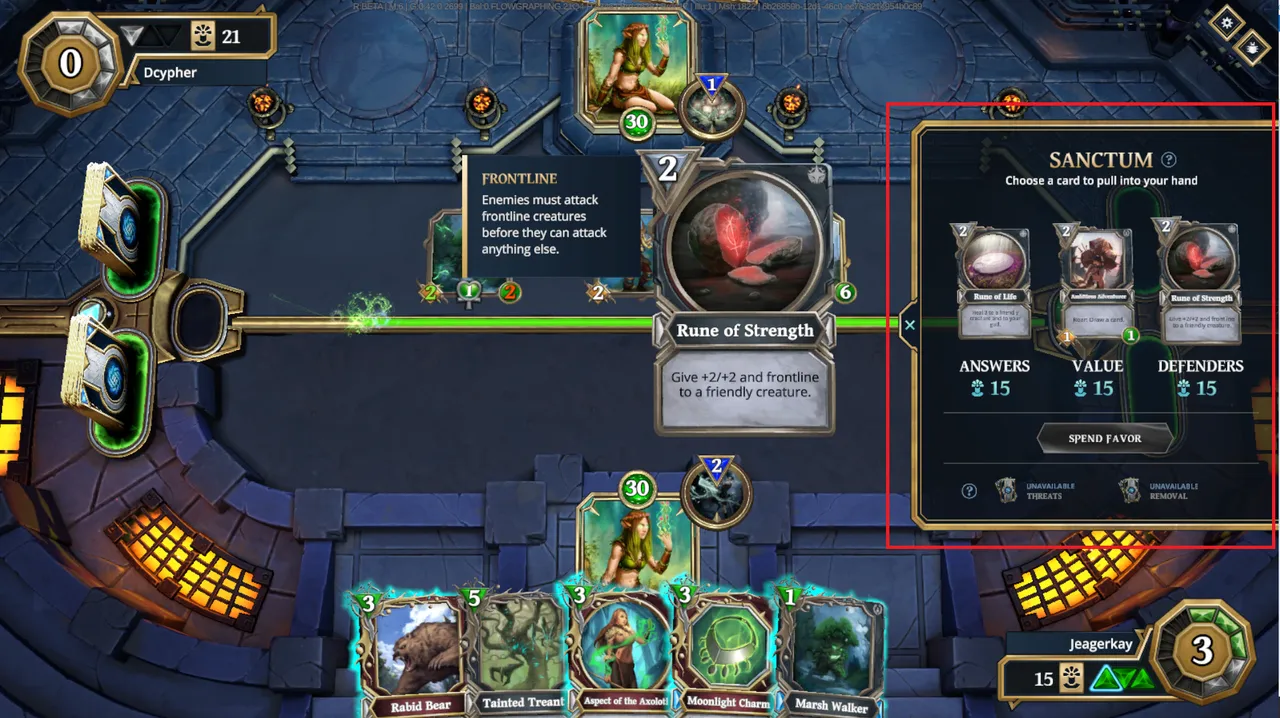
The sanctum serves as a card shop available during the match
where you can purchase cards during your turn using favor as currency.
Favor can be earned during your turn by attacking your opponent's God or destroying enemy creatures.
Cards purchased during your turn can be use immediately, provided you have enough mana gems of course.
How to gain favor
You gain favor by completing "Favor Actions" during your turn
First Turn: Max 1 favor rewarded per favor action
Second Turn: Max 2 favor rewarded per favor action
Third turn and onwards: Max 3 favor rewarded per favor action
Favor actions:
- Attacking your opponent's God
- Destroying an enemy creature with spells
- When your creature destroys an enemy creature and survives the attack
The Void
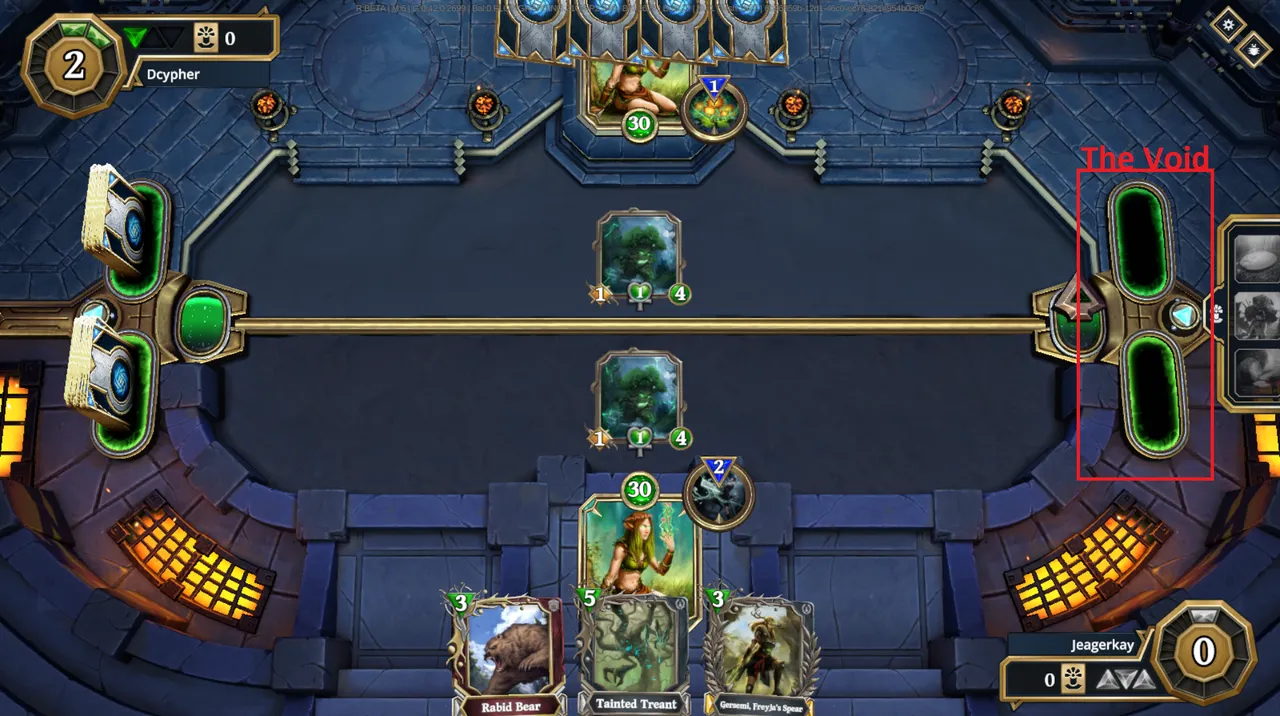
This is where all used spell or destroyed creature cards end up in.
You can click on your own void or your opponents void to view which cards have been played, this is especially important to view spell cards. In case you were wondering WTH hit you.
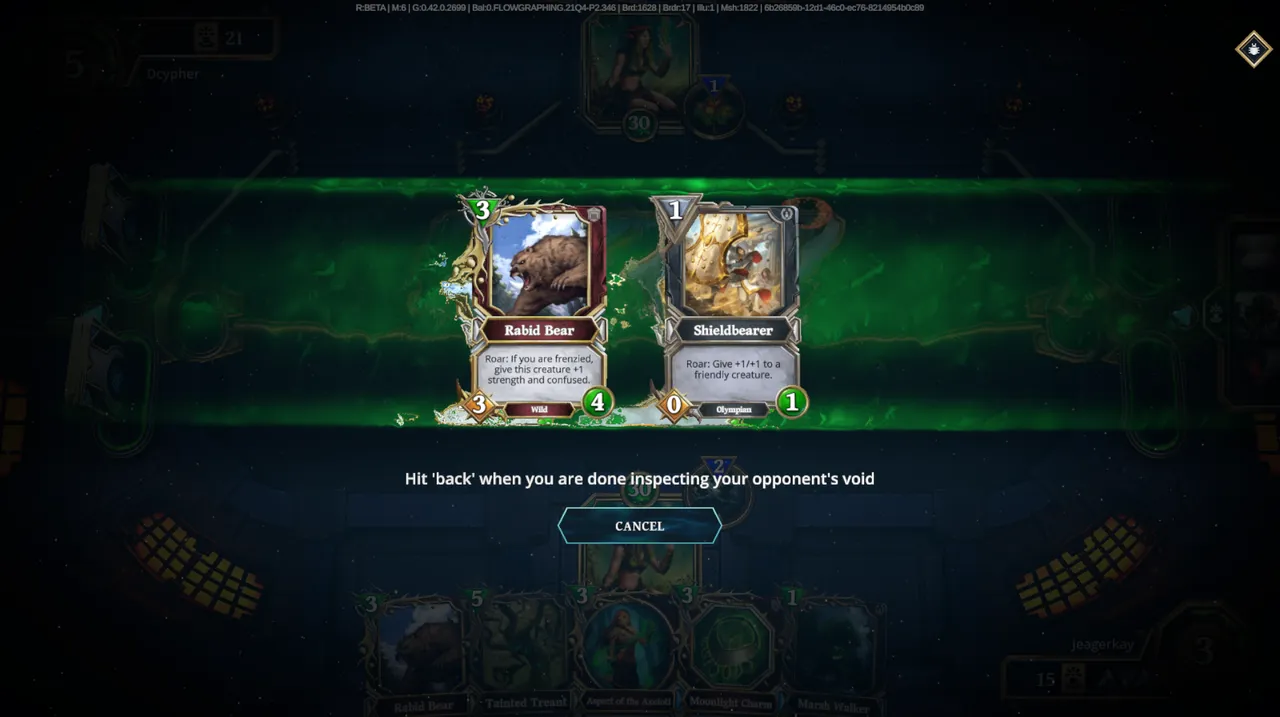
Some other little things to know
- Max card you can hold in your hand is 9
- Any Cards draw after 9 goes into the void straight away
- Obliterated Cards are removed from the Void, meaning there is no possible way to get these back during that match.
- Cards summoned by a card skill during the match skip the void and get obliterated right away.
Outro
I Had to split the guide into 2 parts. Be sure to check out the next Part for tips and info on Deck building and Card Effects.
I hope this guide helps out at least some people out there who are first starting off with this game and I'm certainly open to hearing feedbacks from everybody.
Be sure to follow me for more blogs or drop in on my twitch channel
twitch.tv/jeagerkay for some friendly casual chitchat. Everybody is welcome :D
